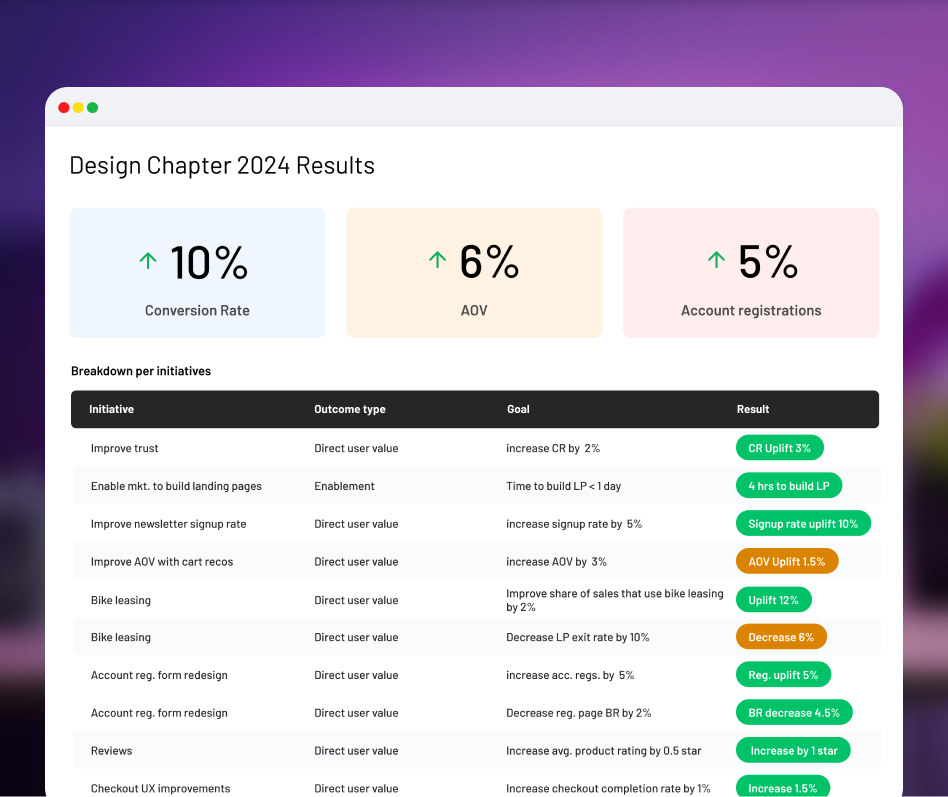Redesigning Amazon for European Sellers
Our team at BBDO helped Amazon redesign their European seller website, driving significant improvements in UX and conversion metrics across five European marketplaces. Ultimately leading to signing all European seller business units of Amazon as clients.
The Problem
Did you know that over 50% of stuff you buy on Amazon come from third-party sellers? In 2019, this is where potential sellers in Europe had to find information and be inspired to register.

Amazon marketplace website in 2019
Amazon's European seller website failed to deliver a seamless experience.
💔 The navigation was problematic, making it difficult for users to find relevant information.
💔 The outdated design didn't reflect Amazon's innovation, leading to a lack of trust.
💔 Low engagement meant that potential sellers were leaving to find information elsewhere.
💔 Additionally, inconsistencies across different marketplaces resulted in a fragmented user experience.
Amazon needed a unified, scalable, and high-converting seller experience across the UK, Germany, France, Spain, and Italy—each with distinct user behaviors, services, and regulations.
Discover
To build a solid foundation for our redesign, we conducted an in-depth discovery phase, combining both qualitative and quantitative research methods.
We analyzed existing analytics, identifying drop-off points, high-bounce areas, and conversion bottlenecks. Rapid guerrilla user testing helped us uncover critical pain points in navigation and information retrieval. Through social listening and community engagement, we gained firsthand insights into user concerns, needs, and expectations. A competitive benchmark analysis revealed industry best practices, while a heuristic evaluation pinpointed usability flaws and accessibility gaps.
Key Insights from Discovery:
- Navigation Complexity: Users struggled to find key information such as tax regulations, fulfillment options, and account setup, leading to frustration and abandonment.
- Content Overload: Large blocks of text overwhelmed users, making it difficult to extract relevant details quickly.
- Trust & Credibility Gaps: Potential sellers hesitated to sign up due to unclear explanations of Amazon's commission structure and seller benefits.
To tackle these issues, we collaborated closely with Amazon's internal teams to align on priorities. Stakeholder discussions revealed that some of the most critical seller benefits were buried too deep in the site. One key moment was when we facilitated a workshop with Amazon's regional teams, where we mapped out seller pain points across different countries and identified misaligned priorities. This helped streamline the new information architecture and define the most critical pathways for user engagement.
Outcome from Discovery
We developed three data-driven personas representing key seller segments, mapped out comprehensive user journeys to visualize pain points and motivations, and established design principles to guide all UX and content decisions. This helped us build a strong foundation of user empathy within the team, ensuring a human-centered approach throughout the project.

Customer journey map highlighting key barriers in the seller experience
Solution - Strategic UX & Content Overhaul
Using our research insights, we worked with Amazon to redefine the website's structure, ensuring alignment with user needs and Amazon North America's design direction. Our approach focused on scalability, clarity, and conversion optimization.
We designed a new information architecture, prioritizing discoverability. We developed structured user flows that simplified the decision-making process. Every single content piece—text, links, videos, and PDFs—was audited and optimized across five marketplaces. Additionally, we ensured visual and UX consistency with Amazon North America while accommodating European regulations.

This is the scope of content we had to rework
Deliver - Scalable & Agile Execution
We managed a project scope that spanned five marketplaces—🇬🇧 🇩🇪 🇫🇷 🇪🇸 🇮🇹—each with unique languages, user behaviors, services offered by Amazon, and different tax regulations. Given Amazon's vast user base, there was no room for mistakes.
One of the biggest challenges was coordinating with multiple stakeholders—both within Amazon and externally. We worked closely with Amazon's regional business teams to ensure the content and UX solutions met local seller expectations. Simultaneously, we were in contact with Amazon's North America team to align with their standards without losing regional relevance. These cross-functional efforts were key in maintaining consistency and scalability.
Additionally, we had to mediate and align multiple Amazon stakeholders responsible for different parts of the website and its content. Each department had its own goals and priorities, and we needed to ensure a unified approach. Through structured stakeholder workshops and cross-functional reviews, we aligned their objectives while maintaining a cohesive and user-friendly experience across the site.
By implementing systematic content audits, structured iteration cycles, and a modular design approach, we delivered an experience that was cohesive, scalable, and high-performing.
This, complemented by a full visual redesign, resulted in the best version Amazon Marketplace Europe has ever had. ❤️ ❤️ ❤️

The redesigned Amazon Seller website
Impact & Results
The redesign yielded significant positive results.
Sign-ups increased by 15%, the bounce rate decreased by 20%, and time spent on site increased by 1 minute.
For Amazon, success wasn't just about metrics—it was about long-term UX transformation. Our work was so well received that it led to three additional European Amazon seller business units contracting us for future UX and design work. This collaboration continued beyond this project, enabling Amazon to further optimize their seller experience.
You can explore the new website at sell.amazon.co.uk.
Key Challenges & Solutions
1. Ensuring Global Consistency
North America was simultaneously redesigning their seller platform, yet direct communication was limited. I have used my knowledge in design systems to leverage systems thinking to adopt shared UI elements and develop missing components, ensuring the consistency.
2. Meeting Tight Deadlines
Amazon's accelerated timeline required rapid execution. We conducted a design component audit and optimized content reuse, allowing us to deliver high-quality results on time without compromising quality.
3. Navigating Stakeholder Complexity
Amazon's internal teams had multiple stakeholders responsible for different sections of the seller website. Each team had its own objectives, requiring mediation and alignment across departments. We facilitated structured workshops and cross-functional reviews to ensure that all stakeholder priorities were considered without sacrificing a seamless, user-centric experience.
My Role
As a Lead UX Designer & Researcher, I played a key role in:
- Defining the final solution: Collaborating with strategists to map sitemaps, content hierarchies, and UX flows.
- Stakeholder Engagement & Influence: Presenting research findings to Amazon leadership, driving alignment, and influencing key design decisions.
- Designing for Scale & Efficiency: Partnering with project managers to optimize production, implement a modular approach, and ensure timely delivery without sacrificing quality.
This role required navigating Amazon's complex stakeholder environment, balancing the needs of multiple European markets, and ensuring alignment with the North American team—despite limited direct communication. Beyond design execution, my focus was on influencing key decision-makers, securing stakeholder buy-in, and ensuring that our UX work was not only visually cohesive but also strategically impactful in driving seller conversions.
Kudos
This project was a testament to collaboration, strategic thinking, and user-centered design at scale.
We were a team of three UX designers, two strategists, one data analyst, three developers, two copywriters, a project manager and a full account management team. Each played a crucial role in making this project a success.
Huge thanks to the incredible teams at BBDO and Amazon for making this happen! Their dedication, expertise, and collaboration made this project one of the most rewarding experiences of my career.
.jpg-7SUe8cuQDEmrs3QOn2WDg7jTj4gZWc.jpeg)

